Fly Fishing for Kenai River Sockeye Salmon
Traveling to Alaska was a trip that my wife and I had been planning on for years. This trip in particular seemed a little daunting; figuring out where to go, where to fish, and especially if we did catch fish, how to get them back home. Obviously, Alaska is a huge state. And we were only going to be there for ten days. We didn’t want to stretch ourselves too thin, so we ended up just staying on the Kenai Peninsula for the entirety of our trip.
Depending on the species of fish you want to target you can visit Alaska from May through October. We decided on traveling to Alaska in July for the nice weather and longer days, but also for the large run of Sockeye (Red) Salmon that work there way up the Kenai River and other tributaries.
The drive down the Seward Highway was breathtaking. We drove on the North side of Turnagain Arm with the mountains in the background. We stopped briefly at Bird Creek at high tide to see if any fish were running, but it was a little too early in the season for the silver salmon that often travel up Bird Creek.
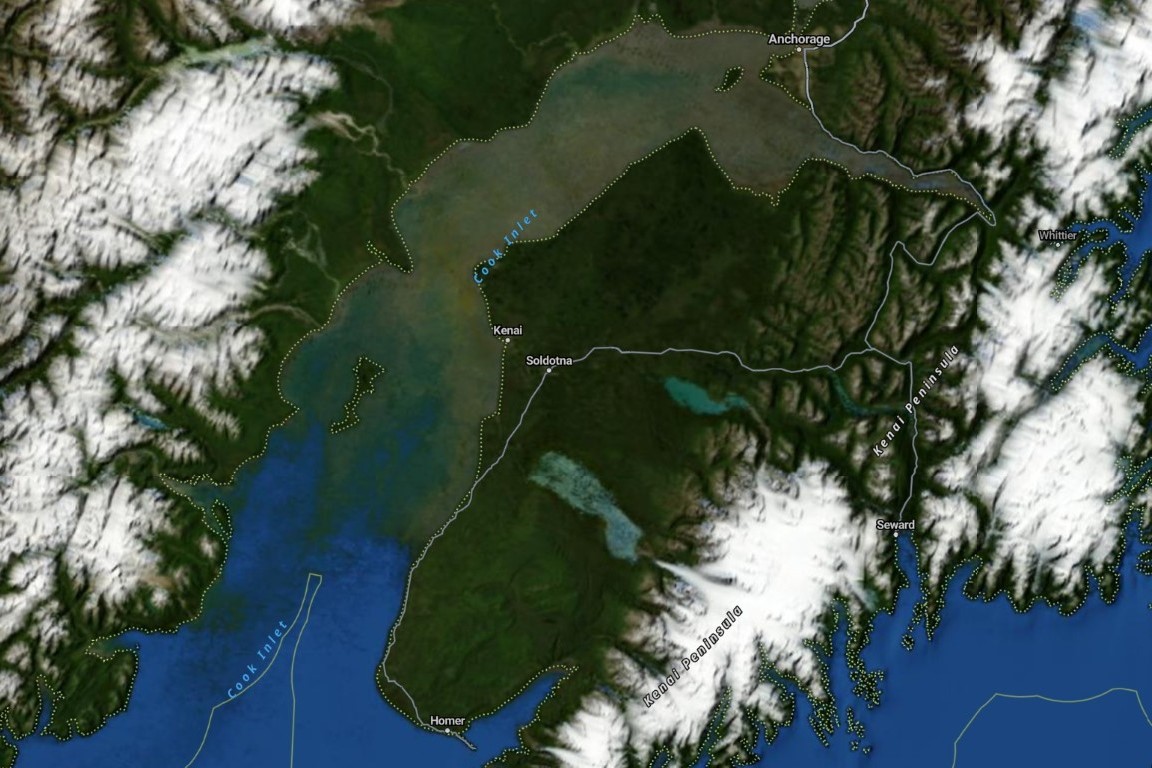
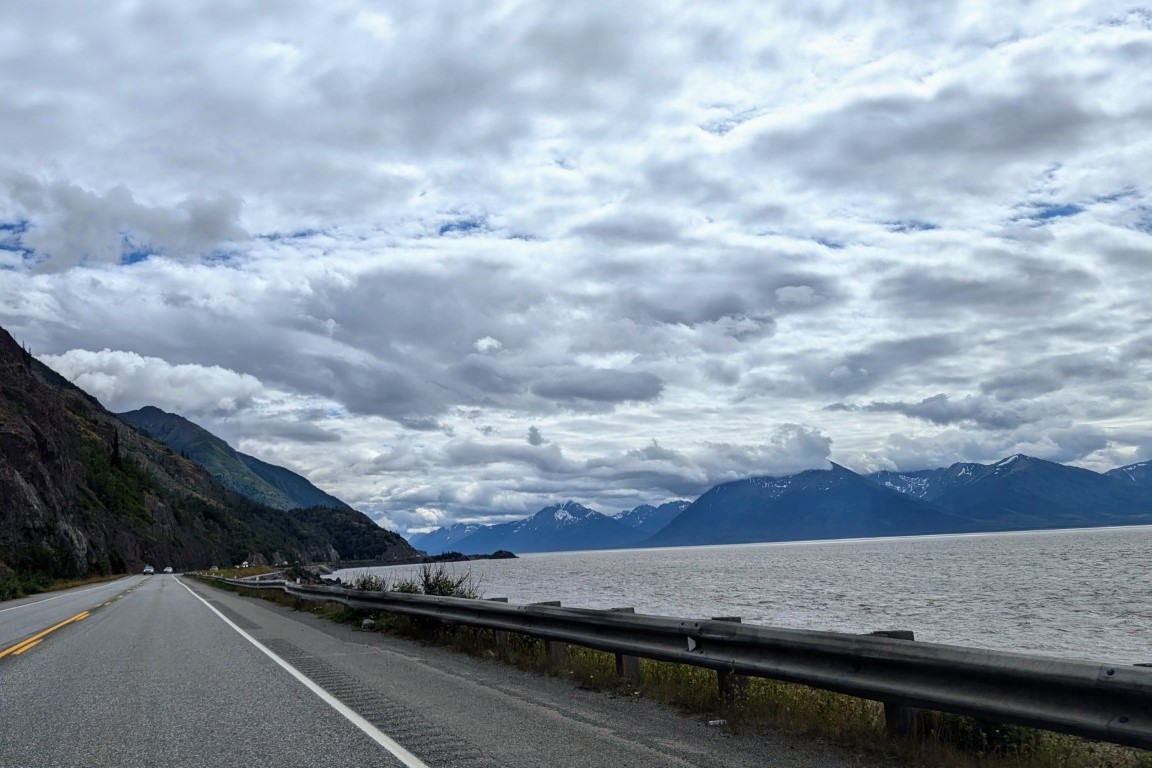
We pulled into our AirBnB in Soldotna. We unpacked, had a quick meal and crashed. Ready for our first full day on the Kenai Peninsula.
Waking up early the next morning, we got our fishing gear ready, and headed out with to try to catch some salmon. We got down to the water, and as soon as you could see the beautiful turquoise colored Kenai River we could see anglers lined up along the shore, and one of them was fighting a fish, then another, and another. I couldn’t wait to get to the water to start fishing!
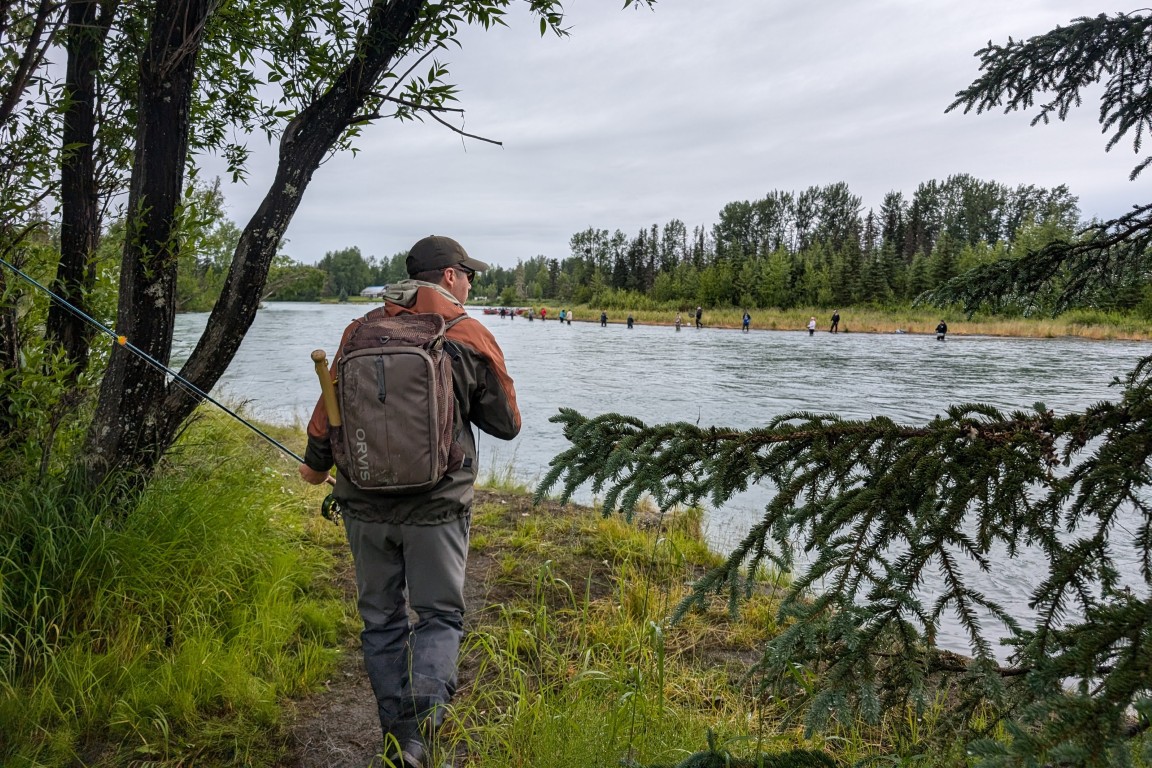
I’ll admit, I was initially skeptical of the “flossing” or “snagging” technique commonly used for sockeye. Typically, I prefer solitude when fishing and methods that minimize the chance of snagging. However, I decided to embrace the local method. I rigged my rod with a long 20-pound fluorocarbon leader, a hefty weight, and a large 2/0 hook.
My skepticism vanished the moment I felt the powerful tug of a fish on my line during a practice sweep. I had been advised to use a 9-weight rod but thought my 8-weight would suffice. I quickly realized I should have listened.
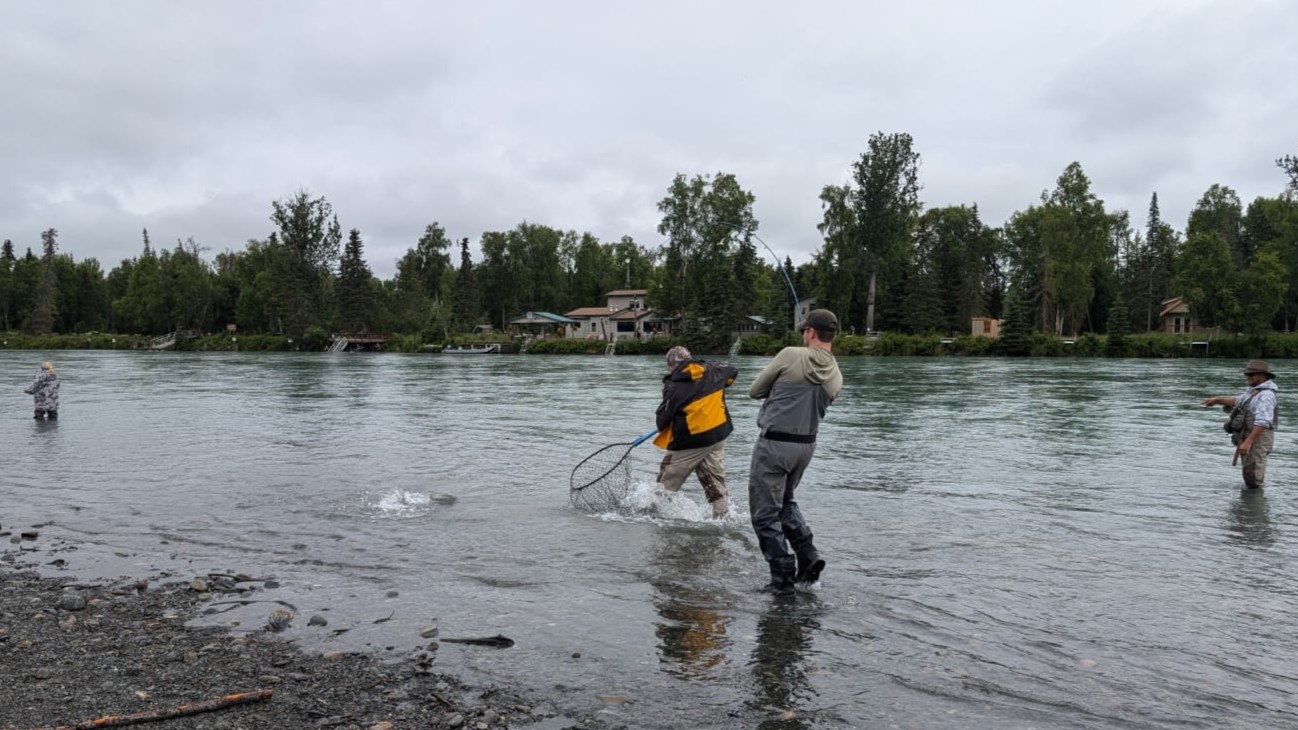
The fight was incredible! The size of the fish combined with the strong current of the Kenai River tested my 8-weight rod to its limits. Having adequate gear is definitely a must.
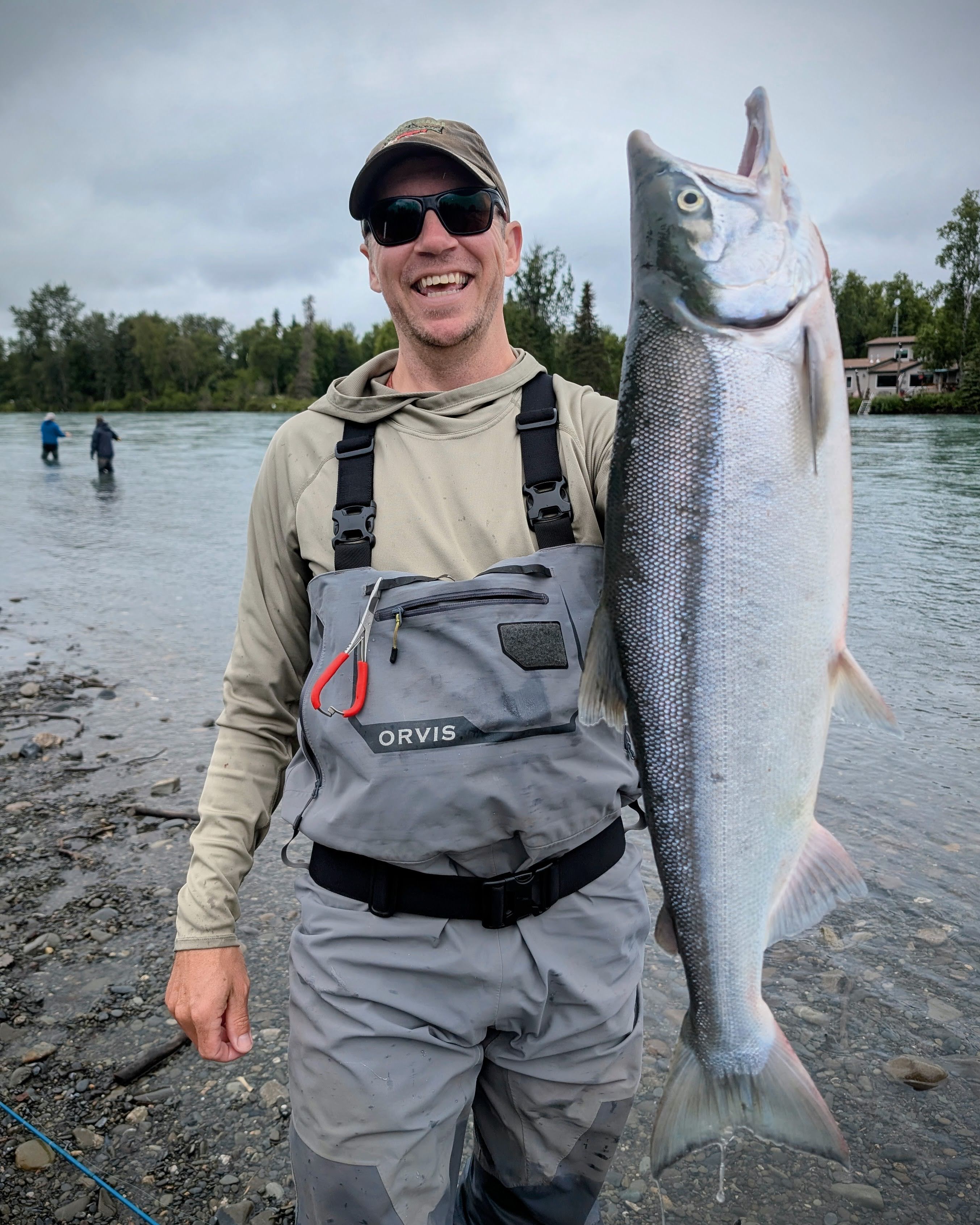
The only downside to fishing for sockeye salmon was that there was no leisurely fighting the fish and enjoying the fight. You hooked the fish, pointed your rod nearly right at it and walked it back to shore. Trying to keep the fish from tangling in everyone else’s lines that are fishing around you. Once you land the fish, instead of reaching for the camera as I typically do, you would reach for a small baseball bat called the bonker. After a good whack to the dome, adding the fish to your stringer, and cutting the gills, you had to quickly get back to your spot before it filled in. Luckily, the sockeye season started with a six-fish limit instead of the typical three fish. That came in handy because it didn’t take long before I caught another, then another, then another, and ended up with a six fish limit on my first day.
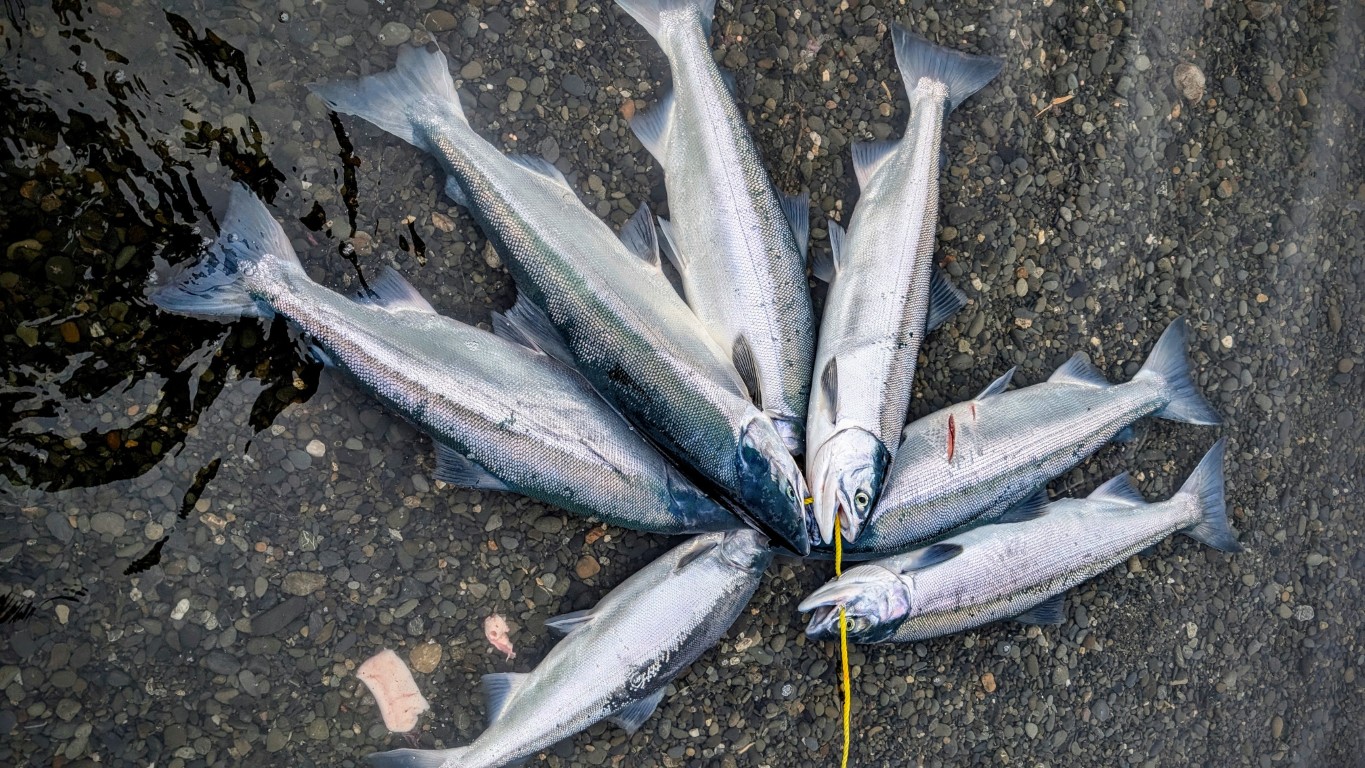
We were now committed to keeping fish though, and we had to figure out how to get them processed, and back home. There are a lot of different waste to process and transport fish. But they all come with different costs and a different level of messing around. Luckily, our neighbors in the AirBnB next to us came prepared and had a couple vacuum sealers that they would use at the end of every fishing outing. We picked up a package of 100 vacuum sealer bags and were luckily able to borrow the neighbor’s vacuum sealers.
If you are able to process your own fish and have access to a vacuum sealer, this is by far the cheapest way to go. We could have brought the fish to a processor, but then we would have to pay them per pound and the cost savings seemed worth it for us to just do it ourselves. It was also helpful to pack a bunch of gallon sized Ziplock bags to get your fish off the river.
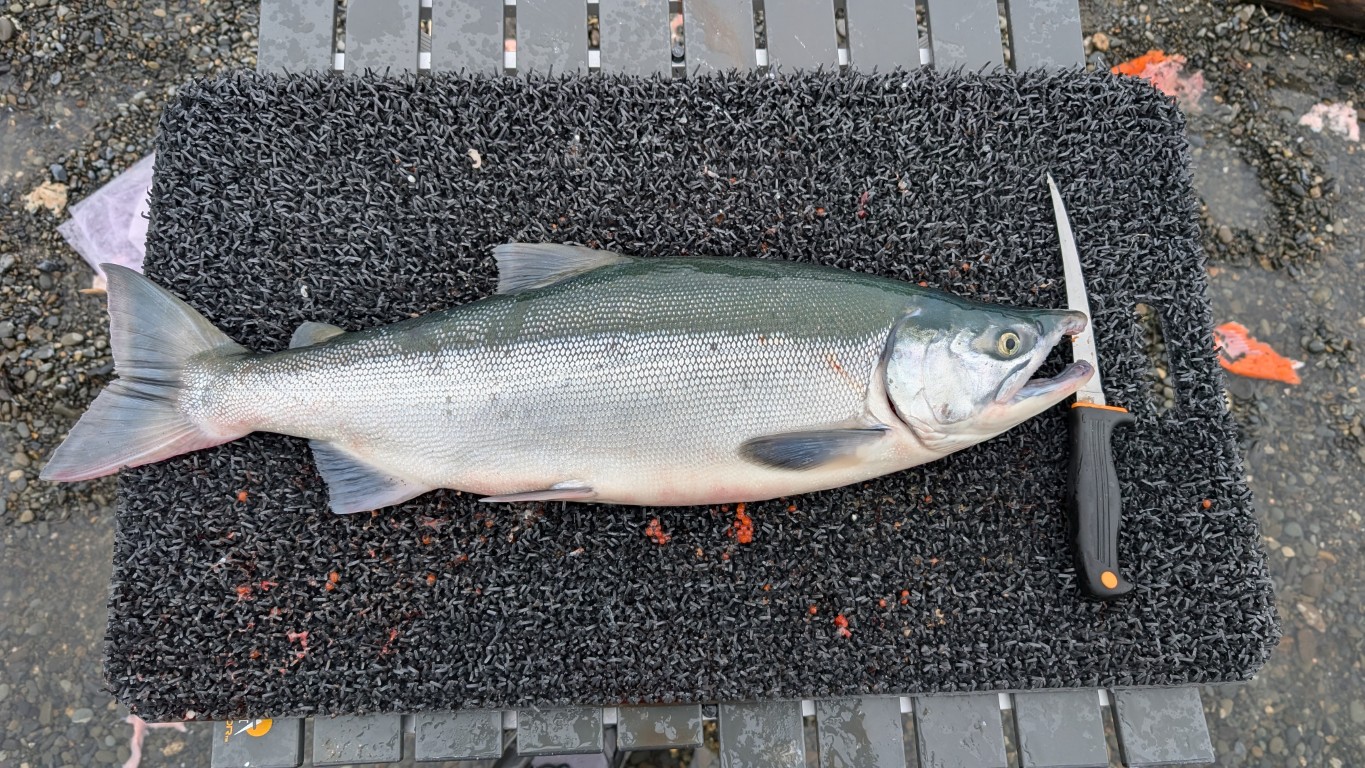
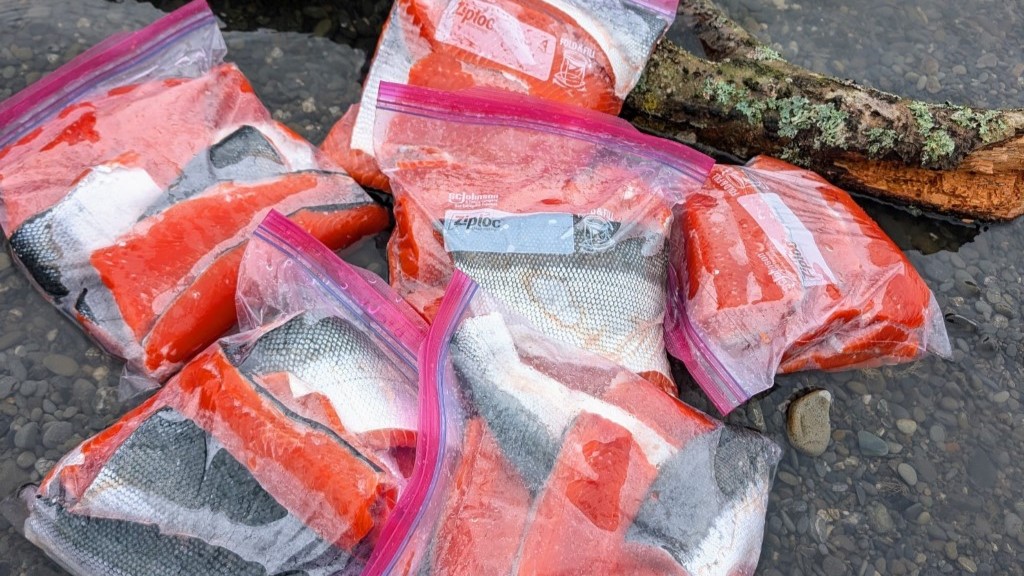
My wife, Morgan, initially planned to just watch, but after seeing the action, she wanted in. We picked up a pair of reasonably priced hip waders and a one-day fishing license for her. The next day, after a quick tutorial, she was landing fish like a pro! It wasn’t long before we both had our limits.
We now had to figure out how much fish we could realistically take home. Our plan was to check our fish boxes as luggage, keeping each under 50 pounds.
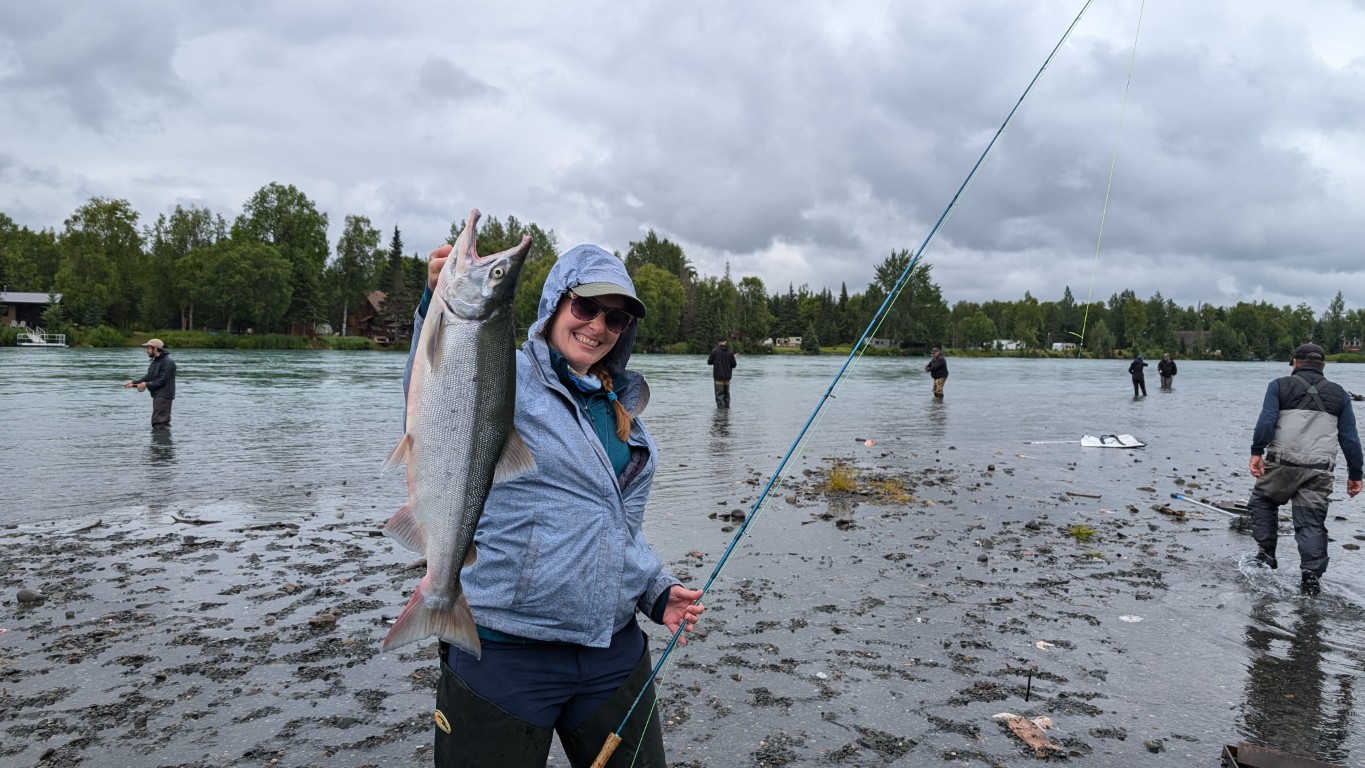
We hit the run perfectly. The first day saw 30,000 sockeye surge up the Kenai, followed by nearly 40,000 the next. On the third day, a staggering 191,000+ sockeye made their way upriver! You could tell there were more fish in the river each day. On the big run day, the fish were practically nose to tail, a sight I’ll never forget. It was as close to shooting fish in a barrel as you can get.
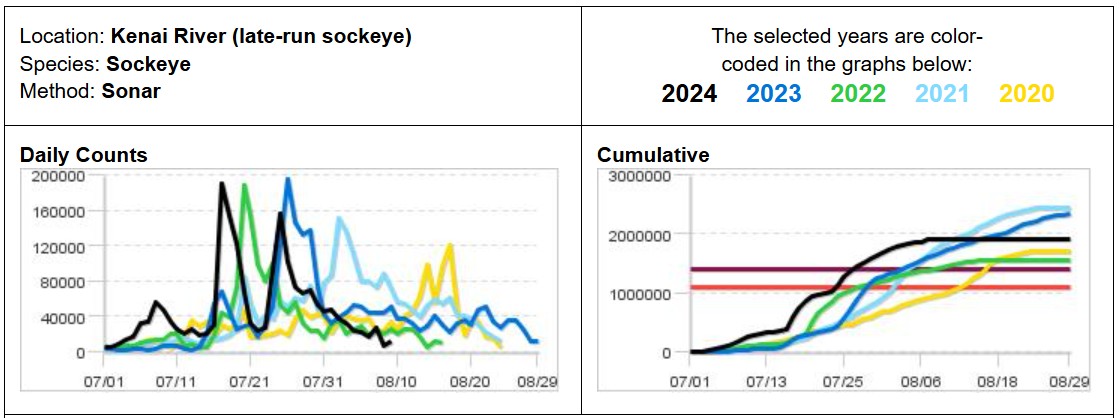 You can view the fish count data here - Alaska Fish & Game Fish Count Data
You can view the fish count data here - Alaska Fish & Game Fish Count Data
The Final Haul: Packing and Transporting Our Catch
After two and a half days of fishing, we ended up with thirty sockeye salmon. We ate two and processed the remaining twenty-eight. Using about eighty vacuum sealer bags, we managed to fit all the packages into the freezer of a standard-sized fridge.
We purchased two 50-pound fish boxes and, miraculously, fit all the packages perfectly. We weighed each box, ensuring they were under the 50-pound limit to avoid any issues at the airport. We ended up with one box at 44 pounds and the other at 45 pounds.
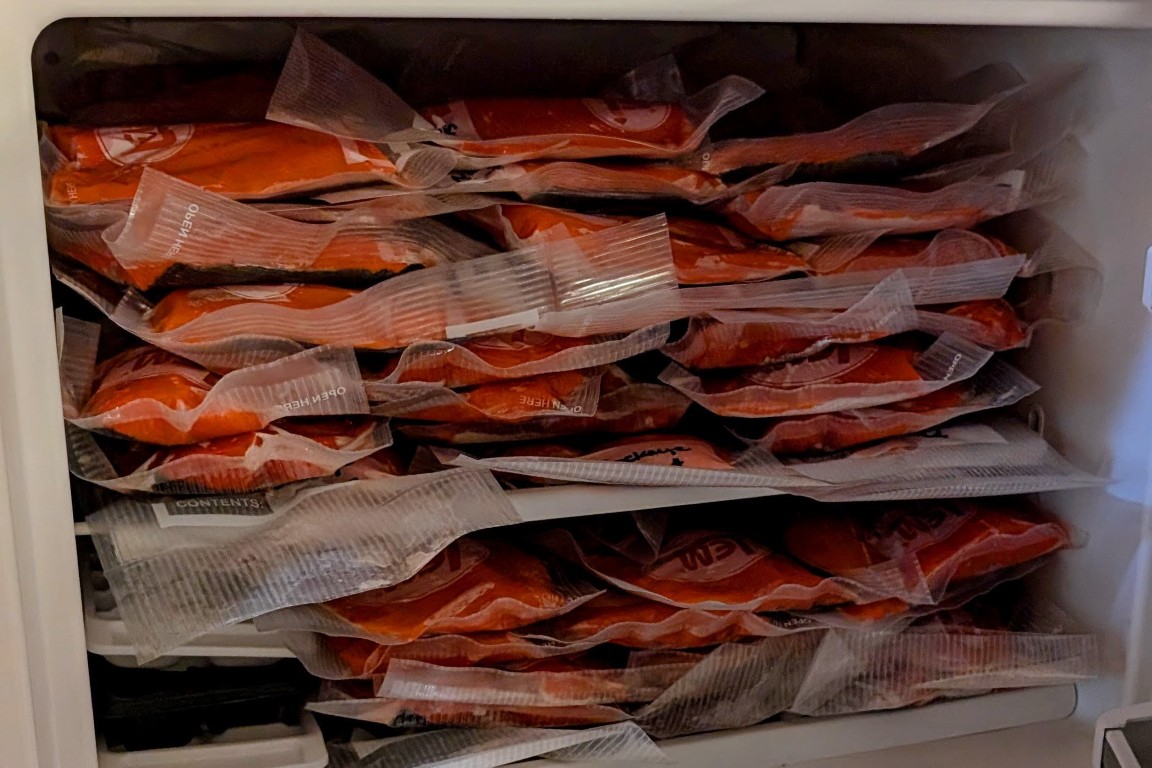

The Sockeye Run
While there are many different times to fish in Alaska, July has one of the largest Sockeye salmon runs. The other benefit to traveling to Alaska in the mid-summer is that the weather is mild, and daylight hours are long. If you are an experienced angler or heading out on your first trip, this is a great opportunity for anglers of all skill levels.
Combat Fishing
I was not very excited about fishing “shoulder to shoulder” with other anglers, and while it would have been nicer to have more room, it wasn’t as bad as I had anticipated. Everyone was under the same understanding that there were enough fish to go around and in general other anglers would give you enough room.
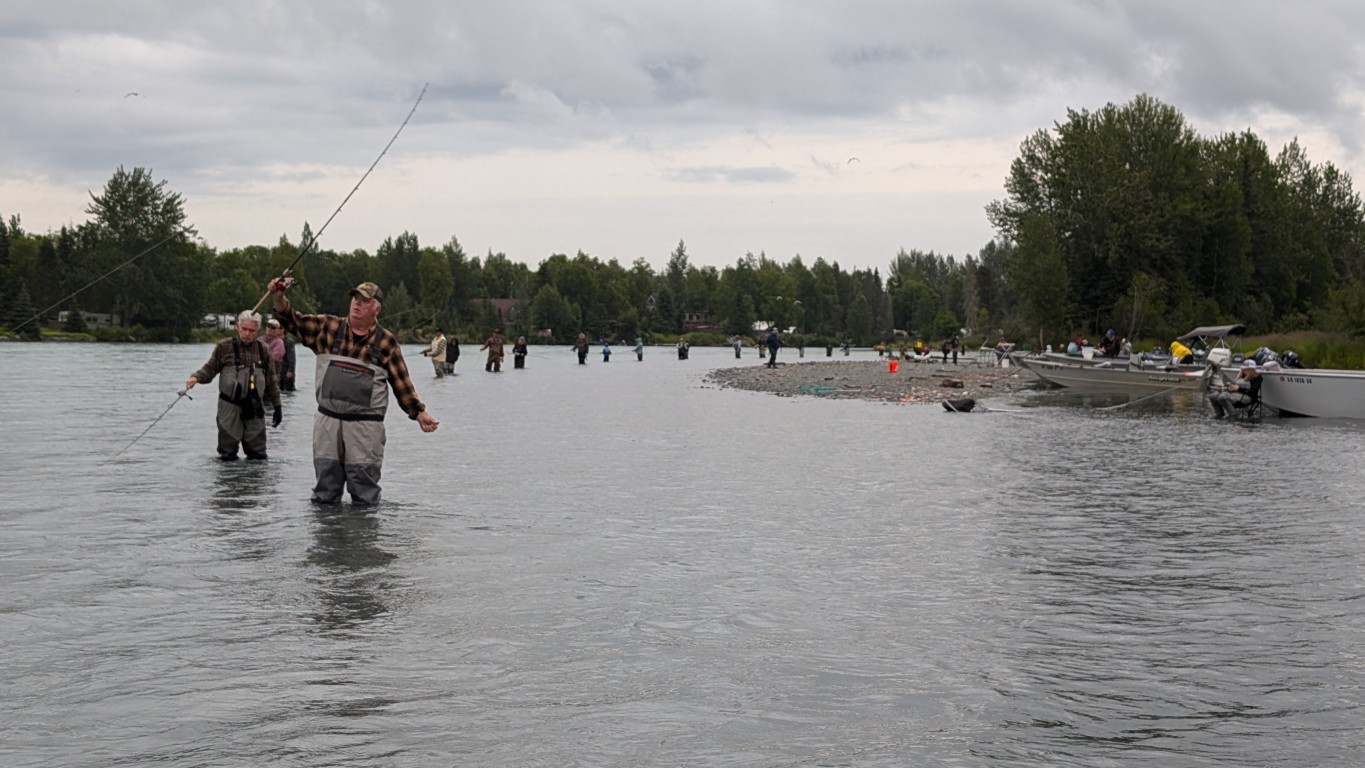
Are they really biting?
Sockeye salmon are unique in their habits compared to other salmon species. They do not actively feed once they enter freshwater to spawn, meaning traditional bait or lure techniques are ineffective. Flossing is the general term used when fishing for sockeye salmon. The rigging method and fishing technique is fairly simple. A heavy weight, and long 3-6’ leader and a big hook is used to drift across the river. The leader will get caught in their mouth and the hook will slide down to their mouth. With the number of fish in the river and the size of hooks that were being used it wasn’t uncommon to snag a fish, but the majority of fish had the hook right in their mouth.
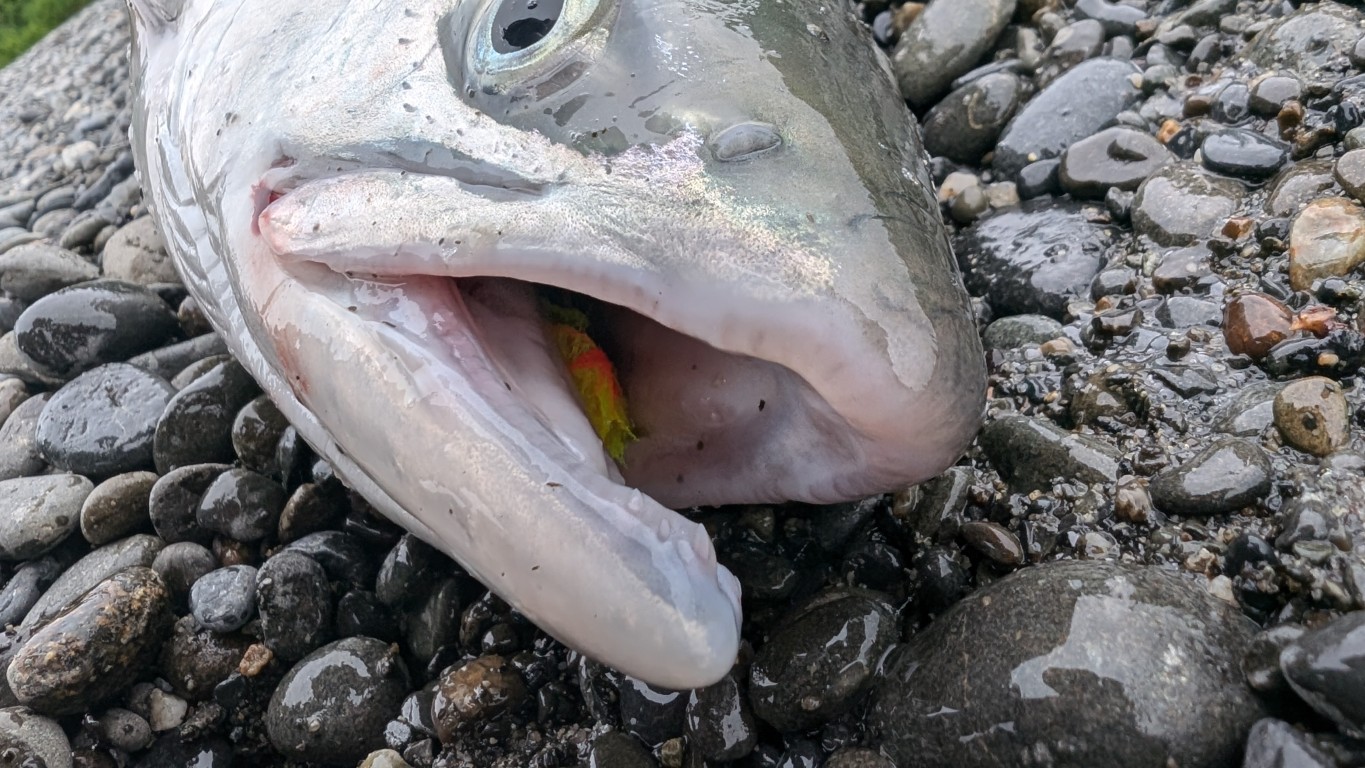
Other Fish You May Catch
While salmon are the main attraction, July is also a great time to catch rainbow trout and dolly varden. These species thrive in the cold, clear waters of the Kenai Peninsula and are often found feeding on salmon eggs, making them particularly aggressive during this time.
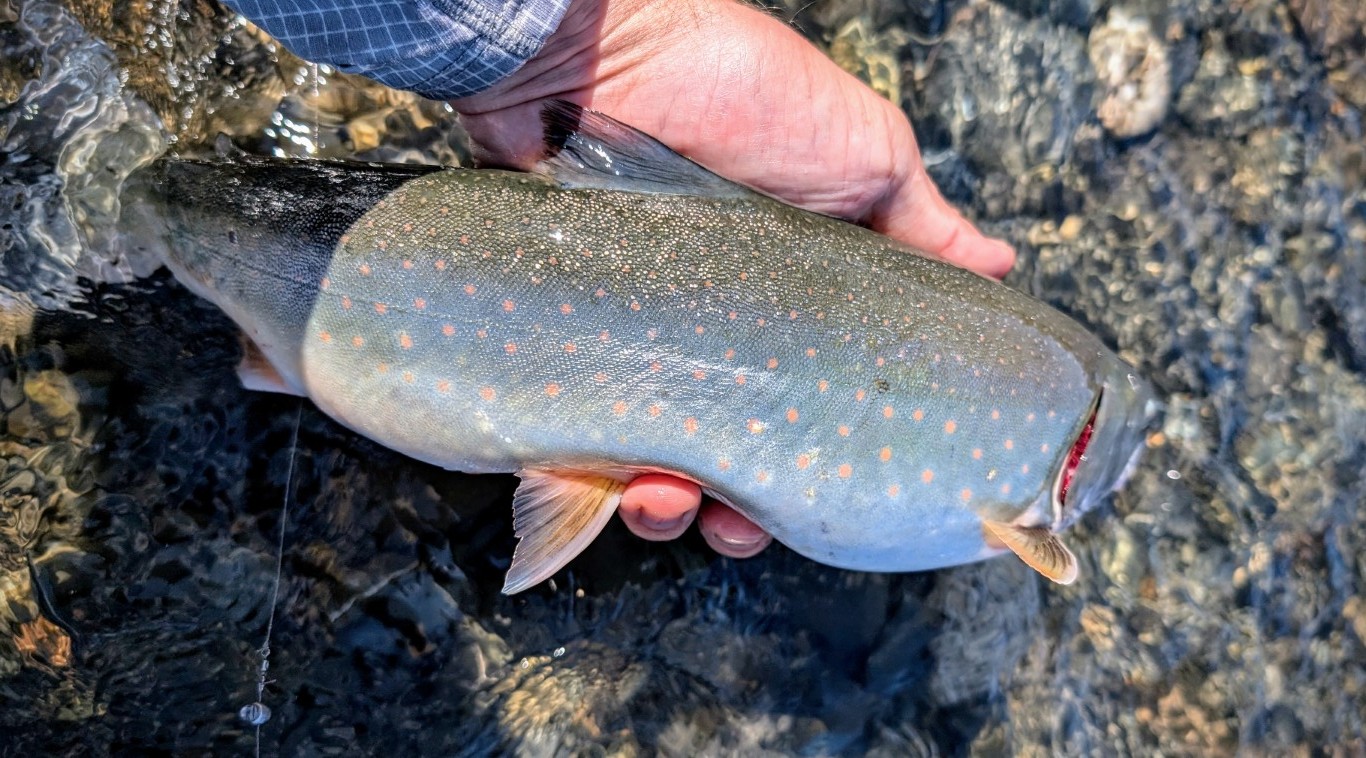
The Best Spots on the Kenai River for Sockeye Fishing
The Kenai River is divided into three sections—Upper, Middle, and Lower. Each offering excellent opportunities for sockeye fishing. In July, the Upper and Middle Kenai are especially popular for their dense concentrations of salmon and picturesque surroundings.
Upper Kenai River
The Upper Kenai, flowing through the Kenai National Wildlife Refuge, is a fly fisher’s paradise. Its clear waters and gravel bars provide the ideal habitat for sockeye salmon and are perfect for wading and casting. Popular spots like the Russian River confluence are hotspots for sockeye, but they can also be crowded during peak season.
Middle Kenai River
The Middle Kenai is a broader, more accessible section of the river that accommodates both bank and boat fishing. This section is known for high sockeye densities in July, and its proximity to the town of Soldotna makes it convenient for anglers.
Lower Kenai River
While better known for king salmon, the Lower Kenai also sees substantial sockeye runs in July. Anglers here often target sockeye near river mouths and tributary junctions.
How to Fly Fish for Sockeye Salmon on the Kenai River in July
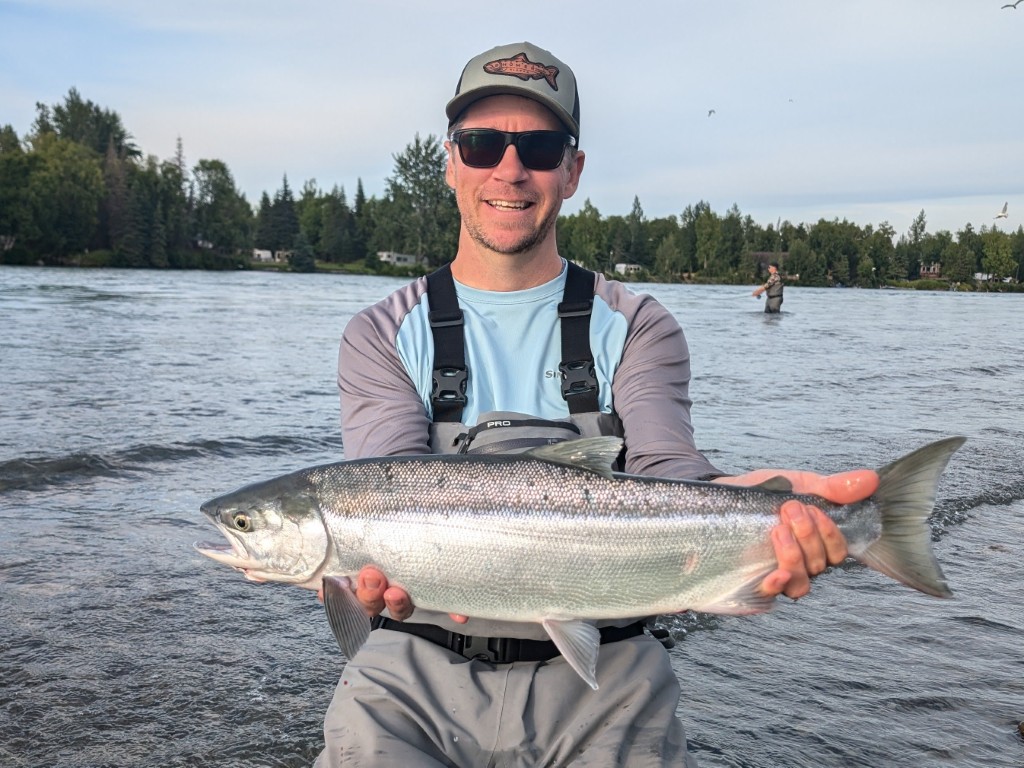 Fishing for Sockeye Salmon is fairly staight forward, but there are definitely a few tips that I wish I would have known before my first trip.
Fishing for Sockeye Salmon is fairly staight forward, but there are definitely a few tips that I wish I would have known before my first trip.
Speak Softly And Carry A 9wt
I often recommend rods based off of three criteria. The size of the fly, fish, and river. In the case of the Kenai, you are fishing big weights in a big river for big fish. An 8wt fly rod is a minimum, but a 9wt or even 10wt is often the right tool for the job. The Soldotna Trustworthy Hardware & Fishing (Get Directions) store is worth a stop to pickup any fishing essentials for your trip. It has very inexpensive Okuma 9wt rods for sale that are worth picking up. If you want to plan ahead you can pick up the perfect sockeye salmon rod here - Okuma SLV 8/9wt Fly Rod. The most popular reel on the Kenai - Redington Behemoth Fly Fishing Reel
Use Heavy Line
40lb mono is the sweet spot for running line. Heavier line tends to coil and you loose sensitivity, but lighter line is harder to handle on cold days. Load up your Fly Reel 80% full with 35lb backing. You will only need a 100’ or so of 40lb mono. Keep in mind, if you wind too much mono onto a fly reel too tight it can bend the spool and cause issues with your drag.
Don’t Wade Too Deep
The Kenai is a big river and it’s easy (on any river) to think that you have to cast way out in the middle to catch anything. However, there is less current on the sides of the river and the salmon have a long way to travel, so they tend to take the path of least resistance. When you fish the Kenai you are often in a line of other anglers. If everyone is in a straight line the salmon will stay within reach, but when one angler steps out further into the river they will push the fish further out and everyone behind them will have a harder time catching fish and often be forced to step out further as well.
Keep Your Rod Tip Low
Keeping your rod tim low when fishing a fish is more of a safety issue than anything. You are often surrounded by other anglers and everyone is flinging around .5oz, 1oz, or heavier weights. When you hook a fish and lift your rod straight up you risk pulling the hook out of the fishes mouth and catapult your heavy right back at you and the people around you. Try to keep your rod tip down maintaining side pressure on the fish.
Change Your Cast and Retrieve to Change Depth
Cast your line up stream and slowly start moving your rod downstram until you feel your weight start to bounce across the bottom of the river, then slightly increase the speed of your rod tip to keep your weight from snagging on the bottom, The method lets you fish a greater variety of depths without needing to change weights. If you still aren’t able to get a good drift with your weight lightly bouncing across the bottom then you will need to change the amount of weight. I found the sweet spot to be be 5/8oz and 1oz.
Essential Gear and Techniques for Fly Fishing Sockeye Salmon
Fishing for sockeye salmon on the Kenai River requires specific gear and techniques tailored to their unique behavior. Here is a list of the gear that I would bring on a salmon fishing trip in Alaska.
- Waders
- Wading Boots
- Fly Rod
- 8wt or 9wt 9’ fly rod (and a backup rod)
- Okuma SLV Graphite 4-Piece Fly Rod
- Fly Reel
- 8-9wt reel with a smooth drag
- Redington Behemoth Fly Reel
- Line
- 40lb mono or any 8wt fly line with a strong core
- 40lb Mono Line
- Leader material
- 20lb fluorocarbon
- 20lb Seaguar Fluorocarbon
- Swivels
- Inline barrel swivels that are at least 40lb
- Snap Swivels
- Weights
- Assortment of 0.5oz to 1oz weights
- Pencil (Drift) Sinkers
- Hooks
- 1/0 to 3/0 octopus hooks
- Gamakatsu Octopus Hooks
- Yarn
- Fish Bonker
- Fillet Knife
- Knife Sharpener
- Gallon Ziploc Bags
- Fillet your fish on the river and get them cleanly off the water.
- Large Net
- You don’t have to bring a net, but depending on where you are fishing a net may be a necessity.
- Fish Cleaning Mat
- Not a necessity, but very handy, you can pick these up once you arrive.
- Backpack
- A waterproof backpack is recommended, but anything you don’t mind getting wet, and dirty will work.
- Fish Boxes
- Purchase these once you are arrive.
How to Rig Your Rod for Sockeye Salmon
There are many different ways to rig your rod when fishing for sockeye salmon. This isn’t rocket science, but there are a few methodologies for getting a setup that will increase your success. I found that having a main line in the 30-40lb range worked well. Tie a snap-swivel onto your mainline and tie your leader material (I prefer 20lb fluorocarbon) to the end of the swivel (not the snap).
Leader
The length of your leader can vary drastically. A longer leader will increase your chances of getting hookups, but too long of a leader will make setting the hook more difficult. I found that roughly four to five feet of leader was a good balance.
Hooks and Sinkers
Snell your hook onto the end of your leader. You can learn how to tie a snell knot here - Learn the Snell Knot. Having a snell knot will allow you to slip some glow yarn between the eye of the hook and the knot. This yarn has multiple benefits. First it reduces the pinch point where your line may rub on the hook eye. Second, it creates a little buoyancy which will keep your hook from snagging the bottom and keeps your leader at a fairly uniform depth. Third, there are other fish including dolly varden, rainbow trout, and potentially Sockeye salmon that will actively target the yarn as an egg imitation. Add your weight of choice to the snap on your snap-swivel. You can use pencil weights, slinky sinkers, teardrop weights, etc. The amount of weight depends on the amount of flow and the depth you are fishing in, but I found that 3/4oz was a good starting point. Having a handful of 1/4oz weights that you can add on is an easy way to get your weight dialed in.
A Trip to Remember: Would I Do It Again?
Absolutely! This Alaskan adventure was an unforgettable experience. Returning home with boxes of delicious wild-caught fish was the perfect ending to a fun and scenic trip. If you’re considering a trip to the Kenai Peninsula, whether you’re a seasoned angler or a complete novice, I highly recommend it.
Share with a friend!
js-outdoors is a free resource for all.
Please consinder donating to keep this site ad-free!


![How To Tie An Intruder [video]](/images/how-to-tie-an-intruder.jpg)
![Steelhead In The Snow [video]](/images/steelhead-in-the-snow.jpg)
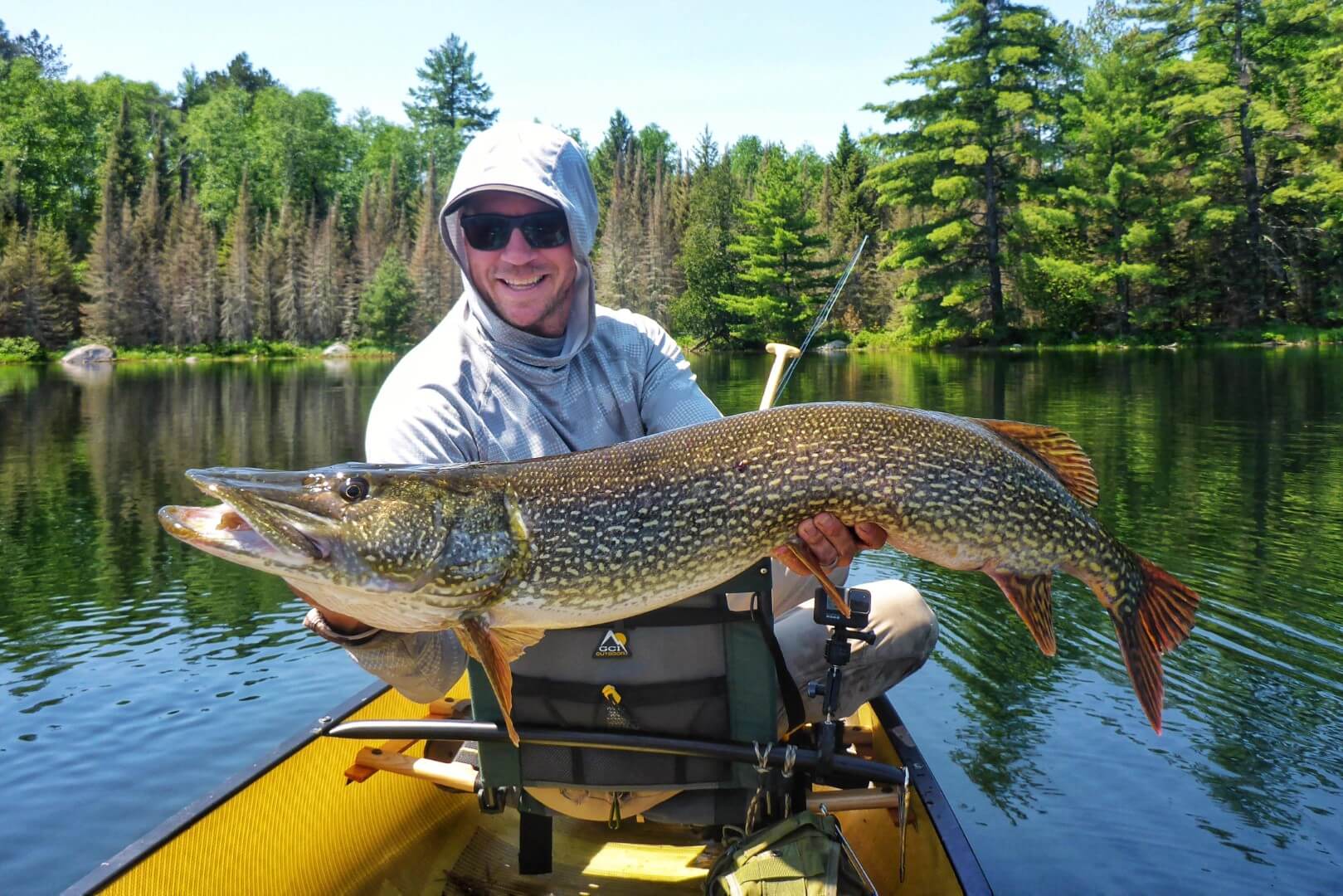
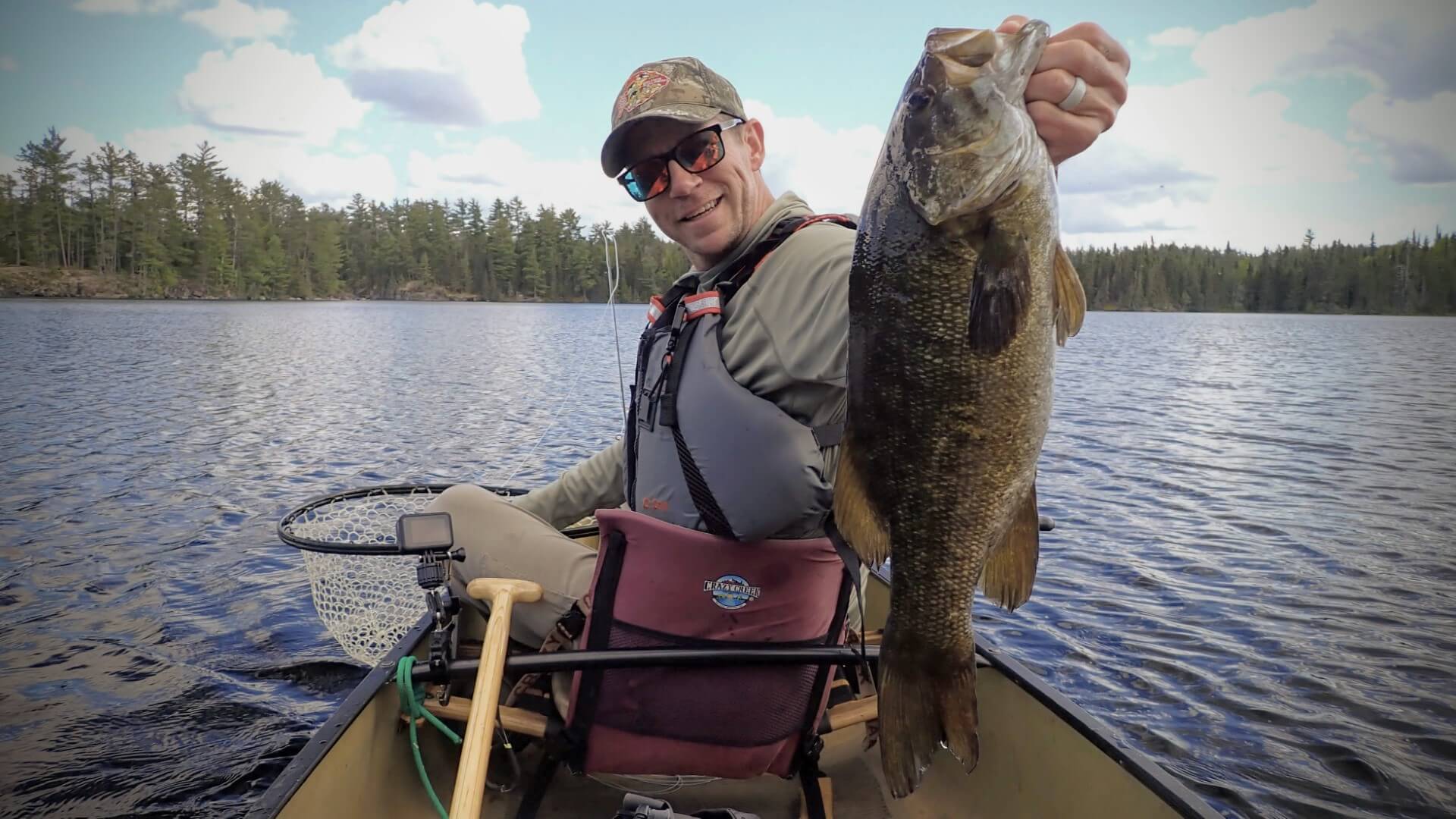
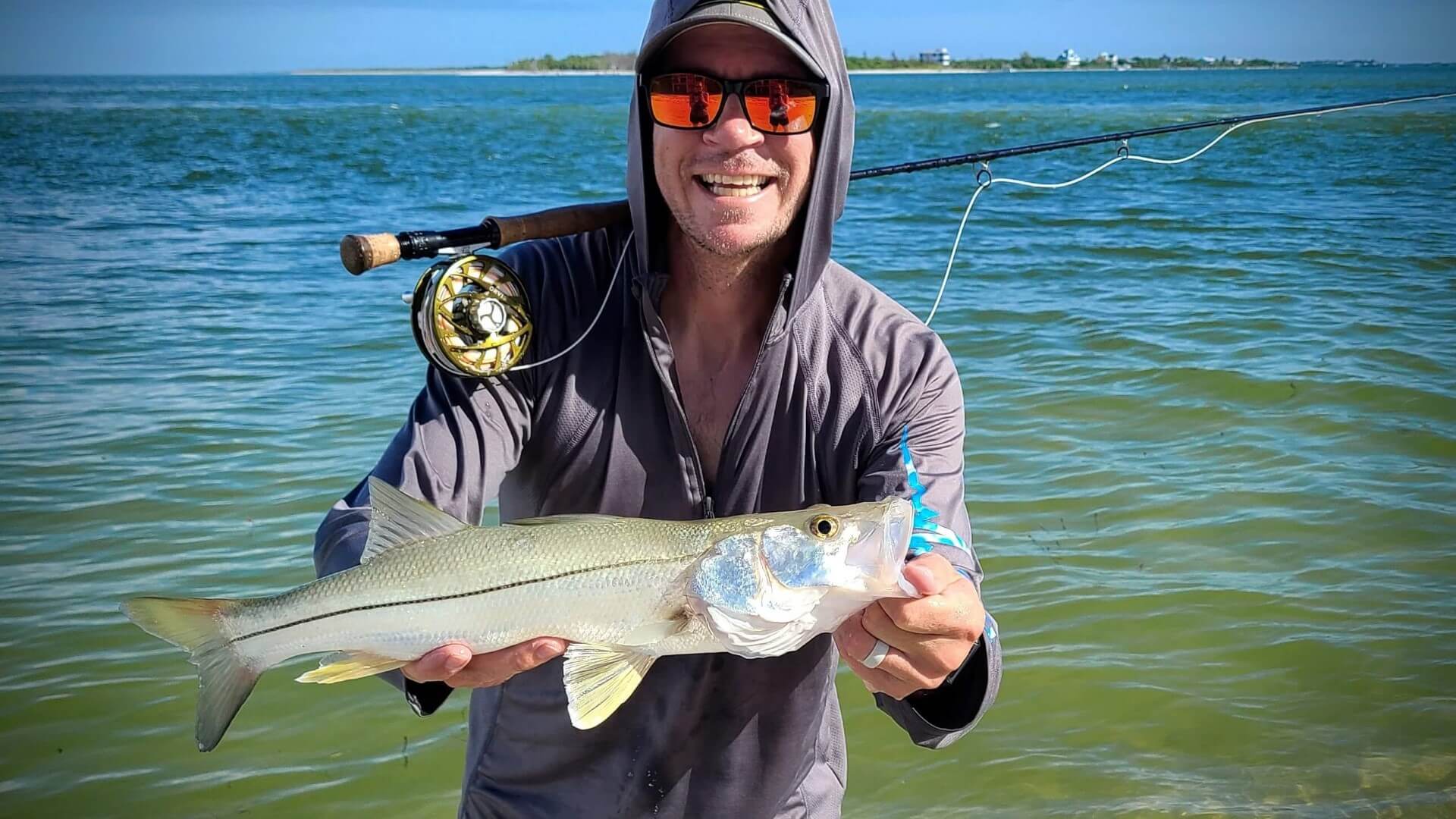
![Targeting Lake Superior Migratory Trout [Video]](/images/brule-steelhead-43.jpg)